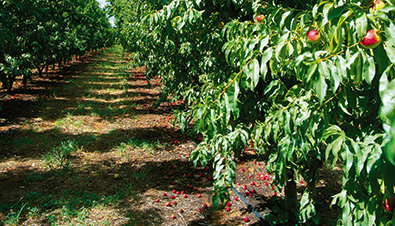Read the latest information on
Foot-and-mouth disease

Leaving fruit where it falls not only invites pests and diseases into an orchard but also attracts wild and feral animals. Image: Summerfruit Australia
With producers reporting traditional backpacker labour shortages for picking crops, there are reports of people saying they will leave their fruit unpicked or left to rot where it falls.
Christina Cook, Manager of the National Fruit Fly Council, is reminding people that that’s not a good idea because it will attract pests and diseases to an orchard, Queensland or Mediterranean fruit fly being two of the worst offenders.
“If a producer leaves fallen fruit in the field, it will cause biosecurity issues not only for them but also for other growers in the area for some time down the track,” said Christina.
“My particular concern is that it’s a fruit fly problem waiting to happen.”
“Fruit needs to be mulched where it falls to speed up decomposition, or collected and then burnt, buried or fed to livestock so it doesn’t attract pests and diseases,” she advised.
Since the fruit is not going to go into the food chain and be eaten by people, another option is to spray fruit on the ground with dimethoate to kill fruit flies that have already been attracted to the site.
Apart from the fruit fly risks, the free food source may also attract feral animals onto the property.
“Basically, it’s not a good idea and you need to take preventative action.”
“Another thing to remember is that in NSW, Queensland and Tasmania there is a biosecurity duty or obligation for producers to not do anything that they should know would cause a biosecurity issue. This would fall into that category.”